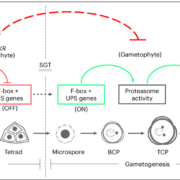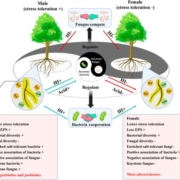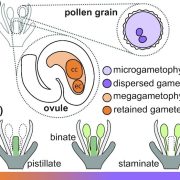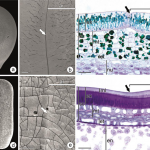Review: La vie en roses, lilies, and other flowers: the floral microbiome (Annu. Rev. Ecol. Evol. Syst.)
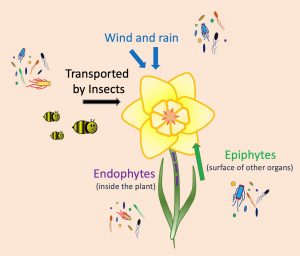 Beyond their beautiful colors, fragrances and shapes, flowers also can host a great variety of life forms. A diverse community of bacteria, fungi, protozoa, and other organisms live in the flowers. A recent work by Rachel Vannette summarizes the current studies about the floral microbiome, highlighting its importance at the ecological and evolutionary level. The first step to establish a microbial community is to arrive; microorganisms use the wind, rain, and insects as vehicles to reach the flowers. Some microbes live on leaves, shoot, and other organs of the plant (epiphytes), so can colonize the flowers as soon as they bloom. Other species live inside (endophytes) and can reach the flowers by traveling through the vascular tissues. The next step is to survive. The composition of the microbiome is very dynamic, with selection and competition among species two of the causes of this variation. Additionally, some flower traits such as the release of chemicals or morphological features can affect microbial growth. The flower microbiome can alter the quantity and quality of the nectar, or produce volatile compounds that, in the end, may affect pollination. This work summarizes progress on the characterization of the flower microbiomes. It describes the commonly used techniques to study it: in vitro culture, microscopy, and sequencing. Finally, the author presents some questions driving current research on this topic, for instance, “to what extent do microbes drive the evolution of floral traits?” (Summary by Humberto Herrera-Ubaldo @herrera_h) Annu. Rev. Ecol. Evol. Syst. 10.1146/annurev-ecolsys-011720-013401
Beyond their beautiful colors, fragrances and shapes, flowers also can host a great variety of life forms. A diverse community of bacteria, fungi, protozoa, and other organisms live in the flowers. A recent work by Rachel Vannette summarizes the current studies about the floral microbiome, highlighting its importance at the ecological and evolutionary level. The first step to establish a microbial community is to arrive; microorganisms use the wind, rain, and insects as vehicles to reach the flowers. Some microbes live on leaves, shoot, and other organs of the plant (epiphytes), so can colonize the flowers as soon as they bloom. Other species live inside (endophytes) and can reach the flowers by traveling through the vascular tissues. The next step is to survive. The composition of the microbiome is very dynamic, with selection and competition among species two of the causes of this variation. Additionally, some flower traits such as the release of chemicals or morphological features can affect microbial growth. The flower microbiome can alter the quantity and quality of the nectar, or produce volatile compounds that, in the end, may affect pollination. This work summarizes progress on the characterization of the flower microbiomes. It describes the commonly used techniques to study it: in vitro culture, microscopy, and sequencing. Finally, the author presents some questions driving current research on this topic, for instance, “to what extent do microbes drive the evolution of floral traits?” (Summary by Humberto Herrera-Ubaldo @herrera_h) Annu. Rev. Ecol. Evol. Syst. 10.1146/annurev-ecolsys-011720-013401


